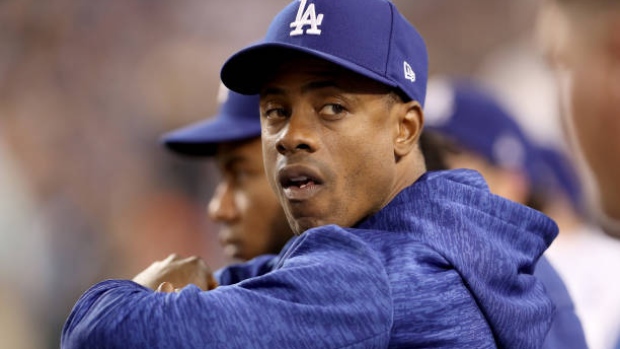Jan 16, 2018
Jays start the process of improving outfield production
Even at his advanced age, Curtis Granderson isn’t without redeemable skills that could provide value to the Blue Jays, Scott Mitchell writes.

Piece by piece, Ross Atkins continues to put together what he hopes is a playoff-calibre roster.
As the process evolves through this slow moving off-season league wide, it’s beginning to become clear that the team the Toronto Blue Jays’ general manager is assembling will consist of a whole lot of moving parts.
Less inked in everyday players, more lineup shuffling and varying options written in pencil for manager John Gibbons.
The latest piece, according to The Athletic’s Ken Rosenthal, is lefty-swinging outfielder Curtis Granderson, who has reportedly been signed to an incentive-laden, one-year deal with a base salary of $5 million.
After adding to the infield versatility already this winter, outfield is still a glaring need for the Jays, but not many were expecting a soon-to-be 37-year-old platoon option.
And that’s exactly what Granderson is.
If Granderson is the solution to one of the worst offensive outfields in baseball last season, things haven’t gotten better.
If Granderson is just part of the solution, however, the signing could be viewed as a low-risk way to incrementally improve the overall production.
Even at his advanced age, Granderson isn’t without redeemable skills that could provide value to Atkins’ club.
Definitely more than Jose Bautista did, and Granderson will cost $13 million less than the $18 million the Jays shelled out for Bautista to set a new single-season franchise record for strikeouts in 2017.
With 26 home runs last season in his time split between the New York Mets and Los Angeles Dodgers — and 19-plus bombs in all but one season since 2005 — Granderson still brings some pop to the table.
He can also still draw a free pass, working 71 walks last year.
Sounds an awful lot like Bautista at this point, doesn’t it?
But where Granderson and Bautista differ is defence and base-running.
Bautista was below average in those areas by both the numbers and the eye test during his final days in a Jays’ uniform, whereas Granderson, while not plus in either aspect, brings more value with his legs, as well as a reputation for being a positive influence in the clubhouse.
The lefty swing will also help balance out the lineup, potentially at the expense of Ezequiel Carrera’s roster spot in a left field platoon with the right-handed hitting Steve Pearce or Teoscar Hernandez.
Last season, Granderson slashed .214/.337/.470 and hit 21 homers against right-handed pitching, producing an above average 114 Weighted Runs Created Plus (wRC+) in 410 plate appearances.
Meanwhile, Carrera, who comes with his own clear defensive deficiencies, slashed .310/.376/.448 with a 123 wRC+ and eight home runs in 283 plate appearances against righties.
Leveraged in the right way and in the right situations, Granderson can start in either corner outfield spot and be expected to produce at a reasonable rate, especially for what it cost.
The worry would be Granderson falling off a production cliff in similar fashion to Bautista, and his finish to 2017 raises some red flags in that regard.
After being flipped to the Dodgers in August, Granderson cratered with the National League champions, going homerless and striking out 33 times in 132 trips to the plate.
That’s clearly not an exciting trend, but, as mentioned, there’s very little risk attached, other than handing key early season at-bats to a player past his expiry date.
If the season were to start today, Granderson could be the left-handed hitting side of platoons in both left and right field, with Kevin Pillar and his valuable glove still patrolling centre.
Currently, it’s hardly a mix that screams postseason, but when you examine the ingredients within that mix, it also looks like the Jays’ roster just improved ever so slightly.

